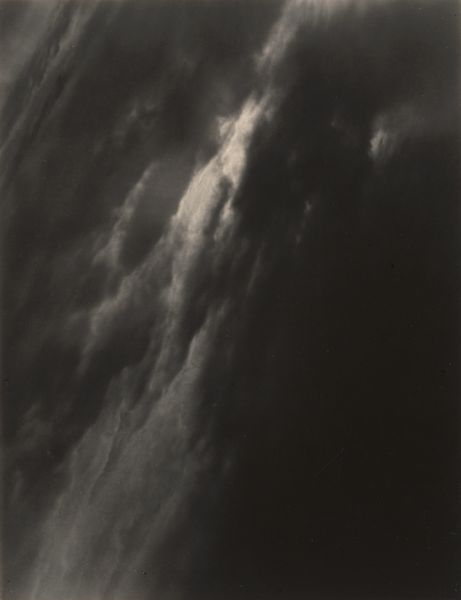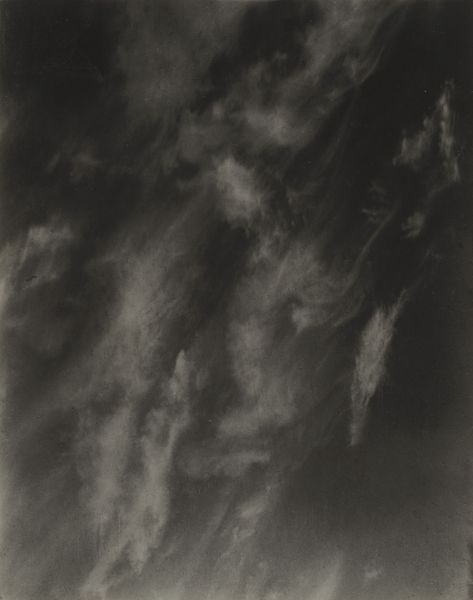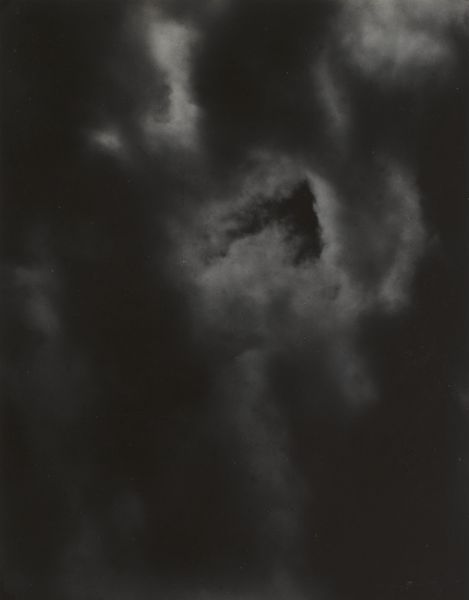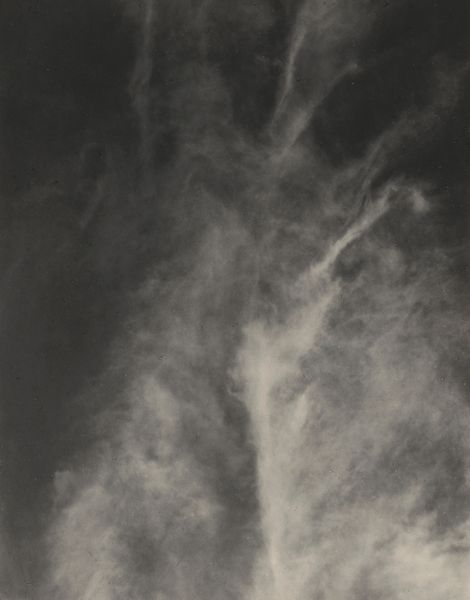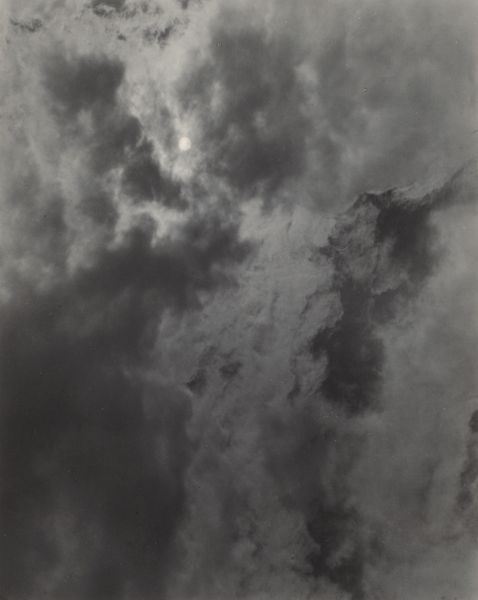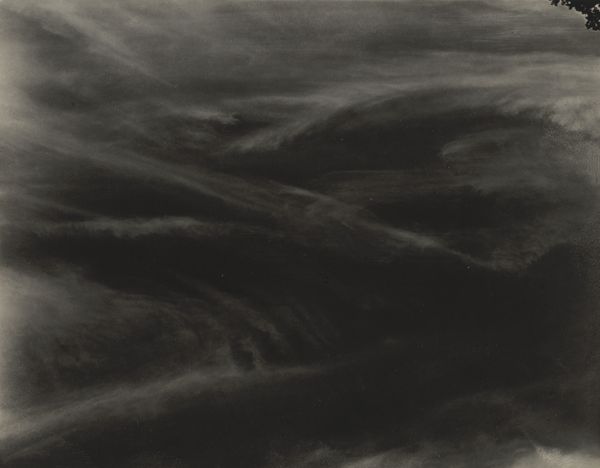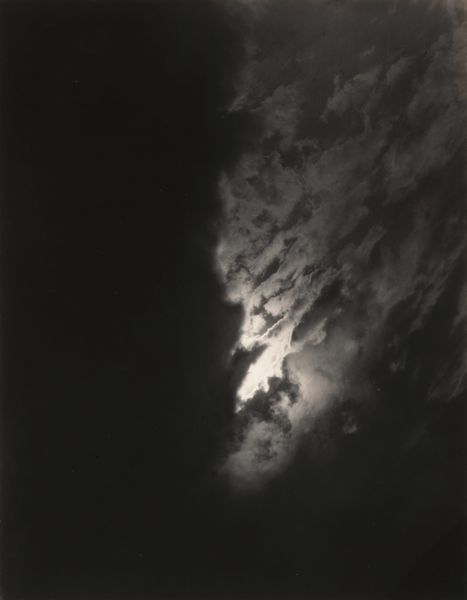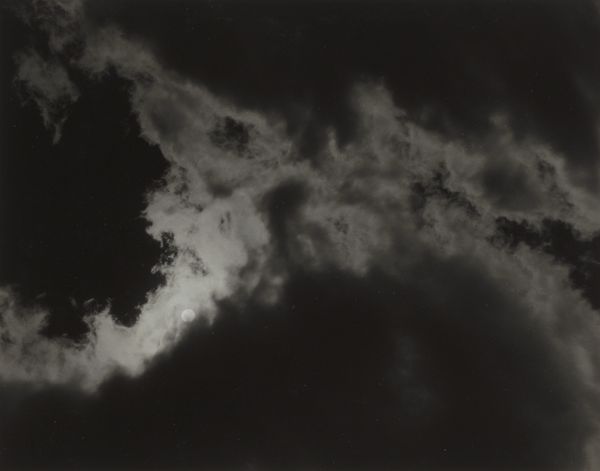
Dimensions: sheet (trimmed to image): 9.2 x 11.8 cm (3 5/8 x 4 5/8 in.) mount: 34.9 x 27.6 cm (13 3/4 x 10 7/8 in.)
Copyright: National Gallery of Art: CC0 1.0
Editor: This is "Equivalent" from 1930, by Alfred Stieglitz. It’s a black and white photograph; wispy, ambiguous. At first glance, it feels very abstract. What do you see in this piece? Curator: Stieglitz, at this time, was deeply involved in a modernist project - demonstrating photography as fine art, equivalent to painting. Consider the socio-political climate. Abstraction was ascending. The ‘Equivalents’ series was consciously challenging the traditional notions of representation in photography. These aren't merely pictures of clouds; they're visual metaphors for his internal state and, dare I say, an entire generation's shifting worldview post-World War I. Do you notice the absence of horizon? Editor: Yes, the lack of horizon contributes to the abstraction and a feeling of boundlessness. It makes you wonder about scale, too. Were these ideas received well at the time, given photography’s more documentary function in popular imagination? Curator: It was a calculated risk. He aimed to evoke emotions, not document reality. Think about the art world then: pushing against academic painting, seeking a "pure" art. These photographs allowed viewers to project their feelings, transcending photography’s perceived limitations. Stieglitz even downplayed technical aspects to emphasize the artistic intent. How do you think this resonated with the general public versus other artists? Editor: I can imagine that the public might not have fully understood the intention at the time, perhaps considering it a skill exercise rather than an aesthetic manifesto. However, the emphasis on abstraction may have encouraged other artists to pursue similarly unconventional subjects or approaches. Curator: Exactly! Stieglitz sought to challenge institutions that determined what was to be viewed as worthy art. In this, there may have been friction between other artists looking to "succeed" conventionally, but overall Stieglitz contributed greatly to evolving expectations of museums and the experience of seeing art in public. Editor: I see the cultural significance now, more than just aesthetic beauty. Curator: Indeed. It's a potent reminder that art doesn't exist in a vacuum; it actively shapes, and is shaped by, the world around it.
Comments
No comments
Be the first to comment and join the conversation on the ultimate creative platform.

